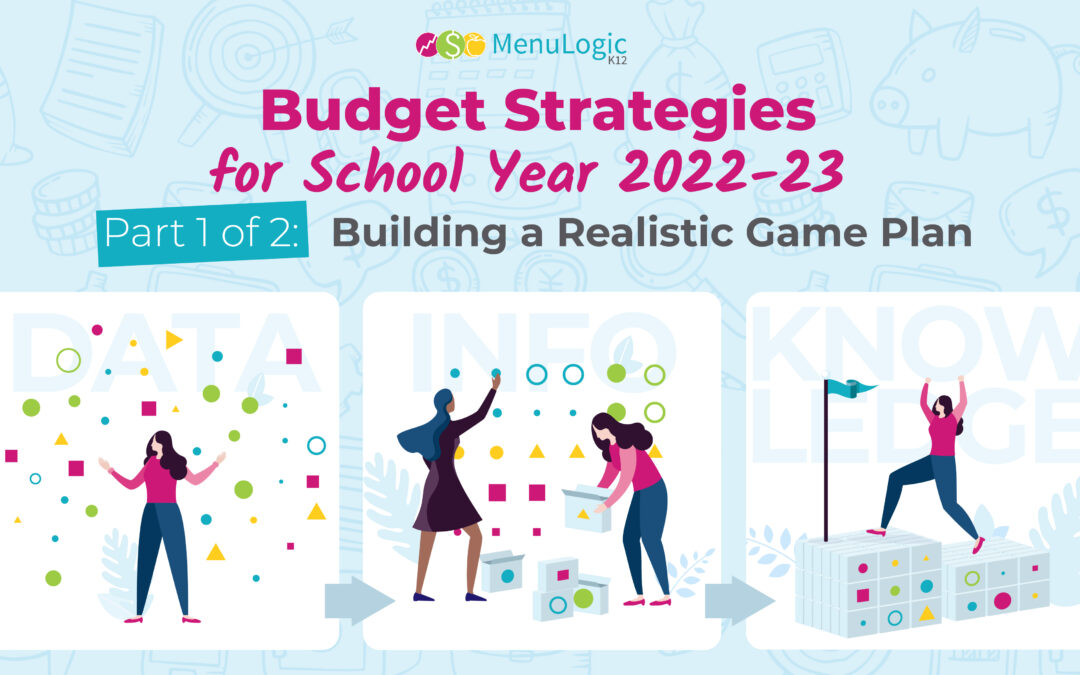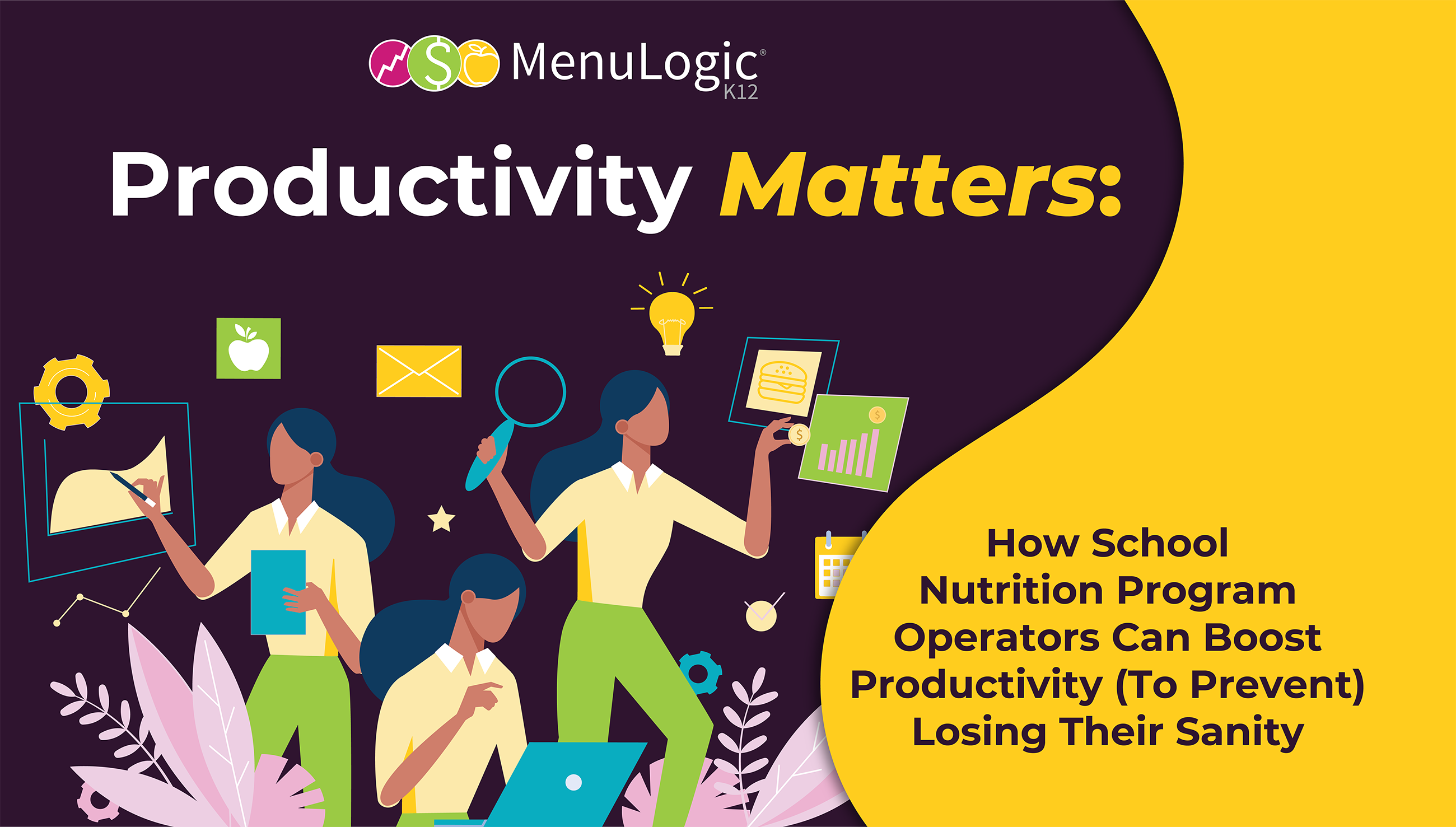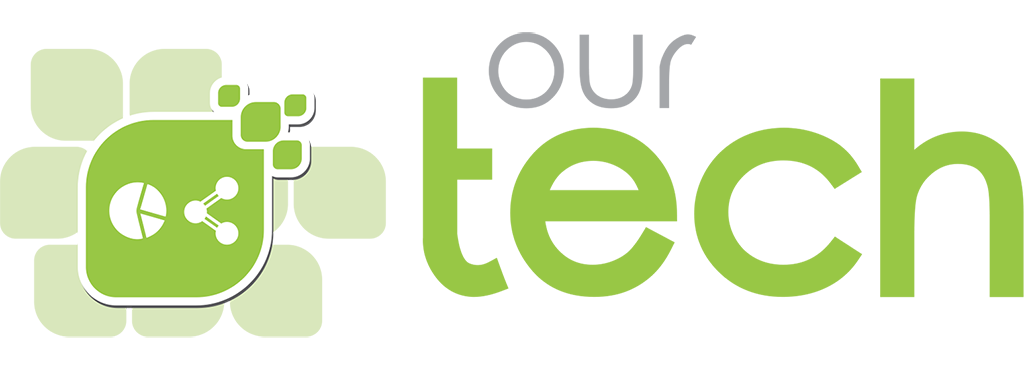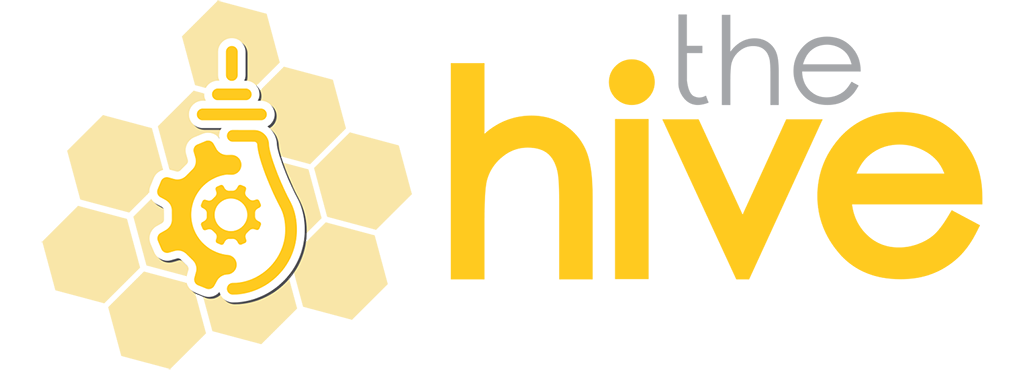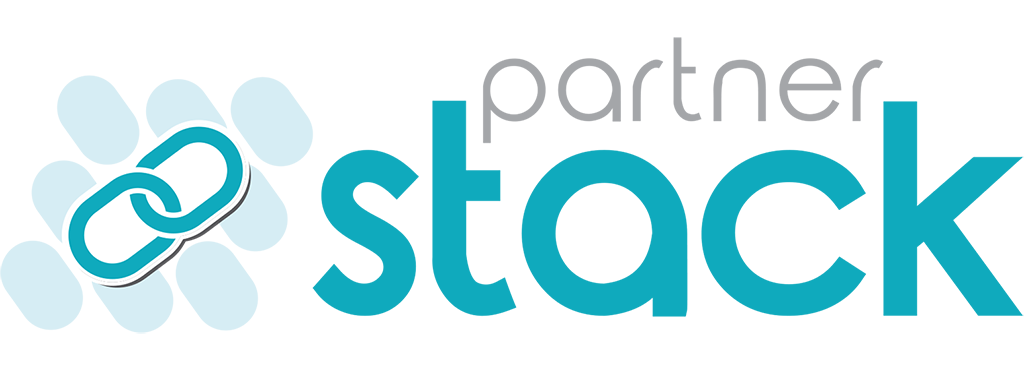Budget Strategies for SY 22-23 (Part One):
Building a Realistic Game Plan
As school nutrition professionals we know that preparing for next school year will be different than any other year in our past.
There are so many unknowns.
Will we maintain the increase in participation that we’ve seen throughout the pandemic due to universally funded meals?
How will we handle the increases in food and labor costs when reimbursement is decreasing?
How do we know what we can afford for labor and what we need to charge for paid meals?
By now, you might have noticed that when it comes to problem-solving, I’ve learned that it’s best to start from as firm a foundation as possible. So, let’s take a look at where we are now before figuring out how best to enter next school year’s unknowns with confidence.
Where We Are Now
One thing we can be sure of is that profit margins are going to be tighter than ever before. We can approach dealing with a tight profit margin in two ways – increase revenue and/or decrease expenses.
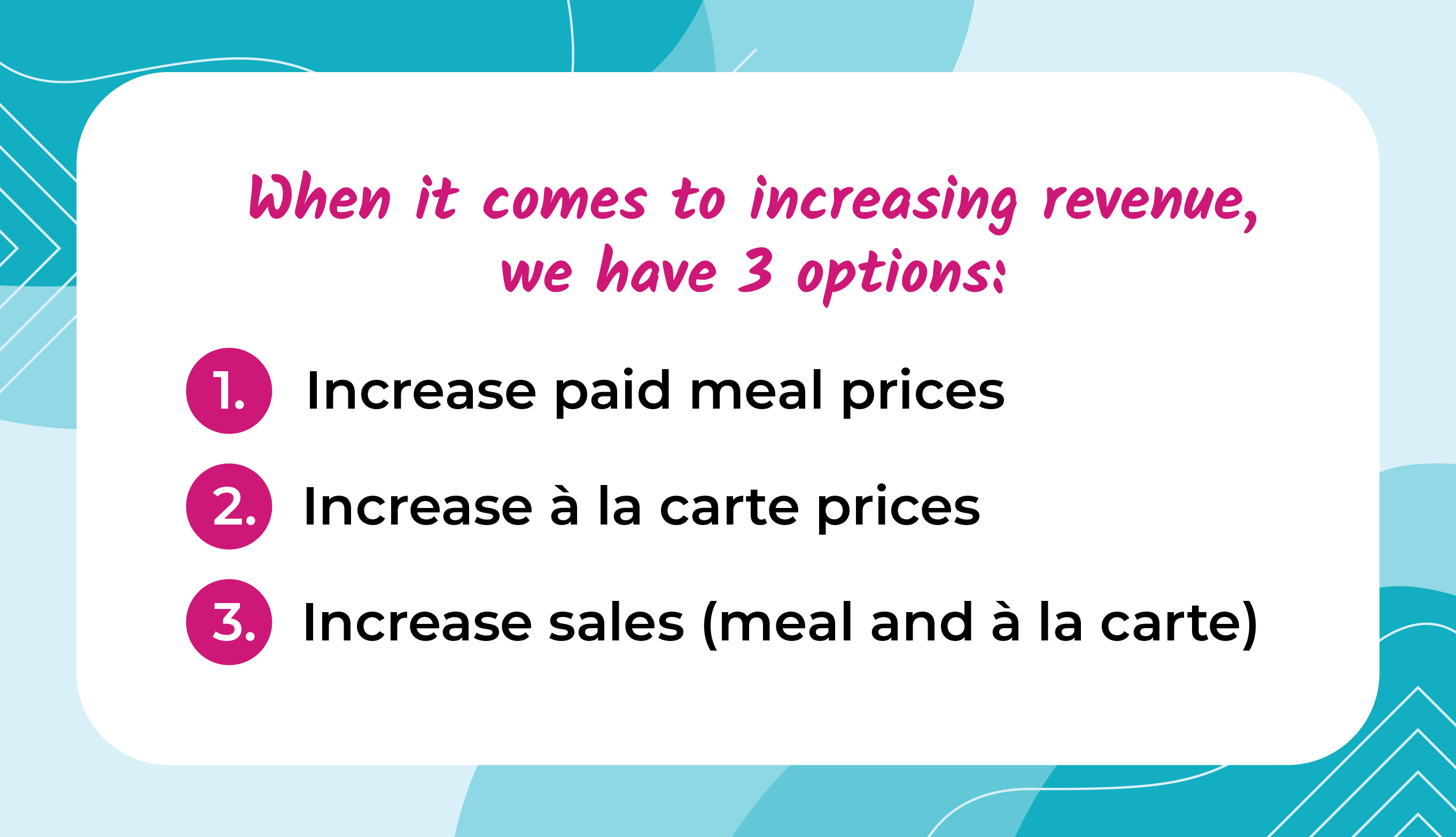
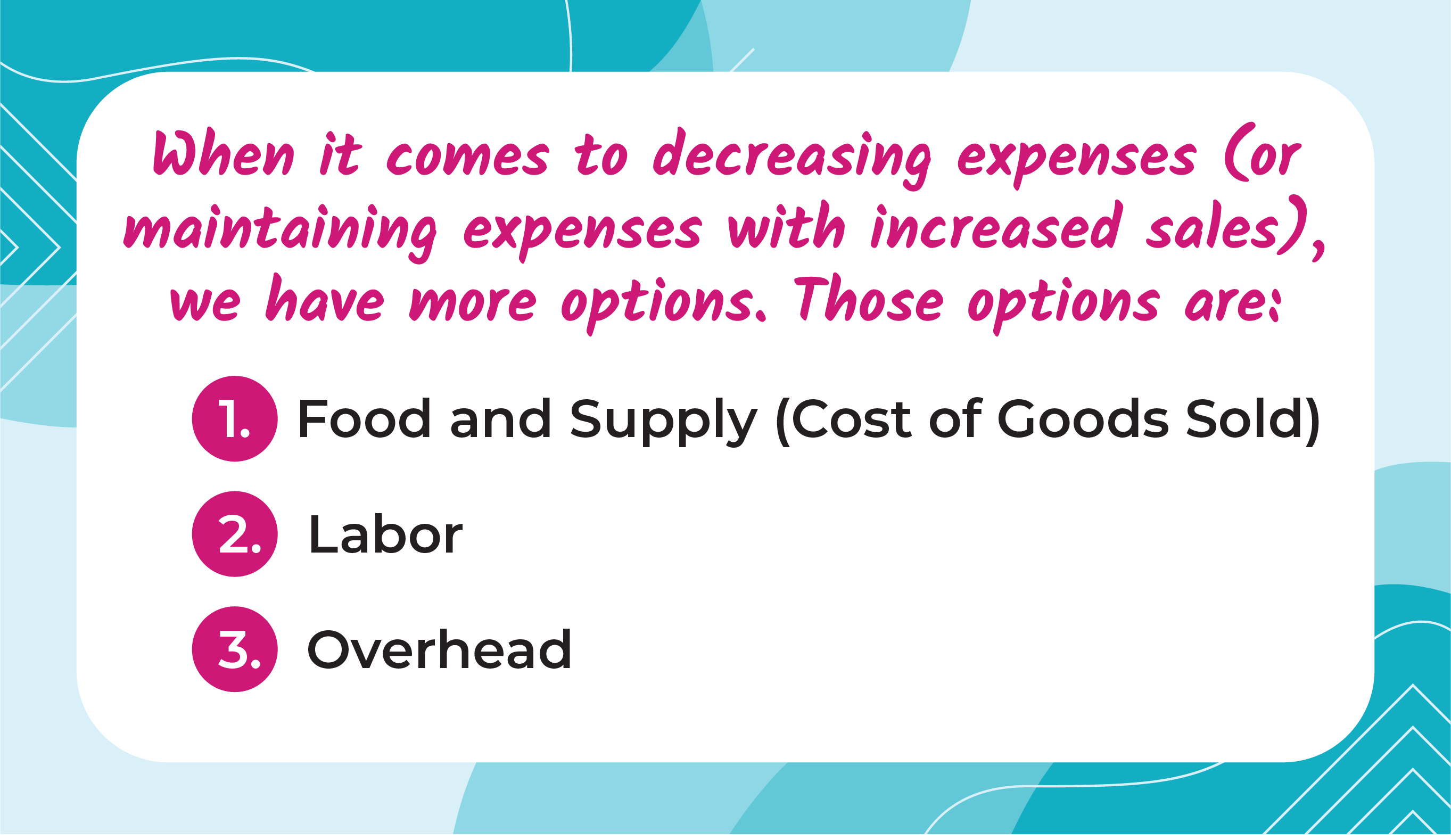
In choosing a path forward, where should we start? I’ve learned it makes the most sense to identify our highest impact effort to affect the situation. The highest impact efforts are those focused on where we spend the most and areas of spending we can use a small amount of time to effectively impact: food, supply, and labor.
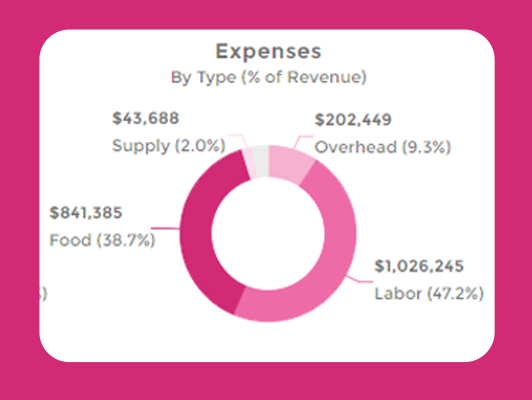
Labor
As we’re experiencing alongside other industries, staffing shortages have driven wage increases to stay competitive and attract and retain our workforce. Unfortunately, those wage increases have had major negative impacts on our budgets.
One idea to consider is whether we can creatively adjust our work schedules to ensure that hours are assigned appropriately and maximized. As daunting as it might seem, now is the time to have these hard conversations with school managers to ensure we’re working together to determine solutions to get the work done effectively, while not putting all the pressure on staff to figure out how to do that.
How does menu optimization impact labor and work schedules? Menu design strategy certainly impacts labor and should be considered.
Food/Supply
This is a major opportunity.
Q: What determines which food/supply we purchase?
A: The menu.
Q: What determines the cost of these food/supplies?
A: Offer vs. serve, serving methods, waste, and more.
Q: What else does the menu impact?
A: Our revenue! It’s not all about cutting costs. Revenue is driven by the menu too.
If there is any place to spend our time and focus on optimization, it’s the menu. If we know exactly which items – combined into menu cycle days – drive not only profitability, but also participation, we can make decisions that will result in success.
Overhead
Overhead costs are all those costs that are NOT considered food, supply, or labor. Not to say overhead costs are not important, but overhead costs aren’t all that important in the big picture. The hour you spent trying to get a refund or credit for $22, the $300 you saved by searching the entire internet for the lowest price might not actually have been the most productive decision financially.
Spending money and time on tools and services that move you forward is a worthwhile investment. So, please don’t let the fear of small expenses (in the grand scheme of things) prevent you from accomplishing your school nutrition program goals.
What’s next?
We’re making big decisions right now. We’re working to figure out how much we need to increase our paid meal prices to at least break even. In some cases, that breakeven is likely a much higher jump than what districts are ready to make. As tempting as it might feel, we can’t – in good conscience and with confidence –just take a guess and hope for the best without a plan in place to monitor that guess.
The best case scenario is that we’re using data-driven information to make big impact decisions that we can then set targets for and monitor the results. The importance of monitoring can’t be overstated. It provides the ability to pause and adjust before it’s too late.
How are we going to build a budget for next year?
Now that we have a solid understanding of the possible ways we can positively impact our budgets, we’re ready to start building! It all starts with having solid information that we can then base our projections on. It’s just not possible to make meaningful “what if” projections without a solid base of information. Trust me, I spent many years trying.
So what is that solid base of information?
Everyone has data. Some districts have more data than others. I think we can all agree that data-driven decisions are a great idea. But how exactly does data drive decisions?
Let’s start with understanding what data actually means. The Merriam-Webster Dictionary defines ‘data’ as: information output … that includes both useful and irrelevant or redundant information and must be processed to be meaningful.
In other words, data is a lot of detail that doesn’t really tell a meaningful story without a method in place to process the data efficiently. Spoiler alert: human beings are not the most efficient data processors out there!
Data must be turned into information, which can then be transformed into knowledge. Knowledge is what we need to be able to take action to have the impact that we want and need to have on our school nutrition program.

To build a budget for next year, we must utilize the knowledge we’ve acquired from information presented to us that has been compiled from a great deal of raw or objective data.

This is complicated in itself without the enormous and impossible task of transforming raw data into information in order to gain knowledge. Let MenuLogic K12 take this burden for you. Not only will you be able to learn about your program in ways you never realized, but you will be able to quickly make well-informed future decisions. Take it to the next step and have a tool by your side to monitor your progress in real-time so that you can make the necessary adjustments to ensure your program’s success.
This upcoming school year is going to be a different type of challenge than we’ve faced before. Let’s rise to that challenge courageously with the right knowledge and tools.

